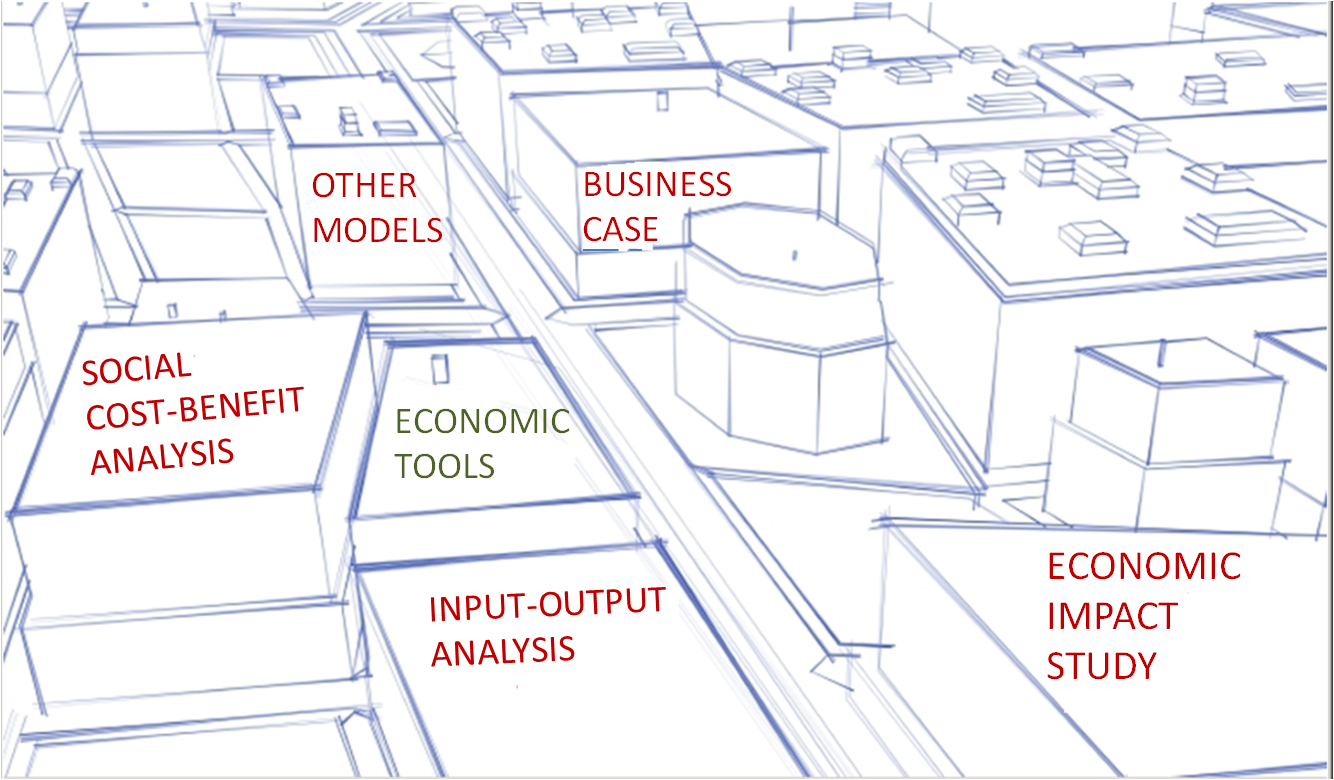Difference between revisions of "Other economic tools"
| Line 1: | Line 1: | ||
= Other economic tools = |
= Other economic tools = |
||
Apart from the commonly used economic impact studies, social cost-benefit analysis and business cases, there are other types of commonly carried out economic analyses ( |
Apart from the commonly used economic impact studies, social cost-benefit analysis and business cases, there are other types of commonly carried out economic analyses (other [[Economic tools|economic tools]]), which are briefly addressed below. |
||
== Relevance for the Urban Planner == |
== Relevance for the Urban Planner == |
||
Revision as of 14:09, 6 December 2012
Contents
Other economic tools
Apart from the commonly used economic impact studies, social cost-benefit analysis and business cases, there are other types of commonly carried out economic analyses (other economic tools), which are briefly addressed below.
Relevance for the Urban Planner
Knowlegde about some frequently used economic models helps the urban planner to systematically survey all the relevant (socio-economic) impact caused by an urban development AND security threats. This insight will help the responsible urban planner to make the best choices from an socio-economic point of view. On this page we limit the explanation to a short definition. For more information on economic tools you can contact Decisio BV in the Netherlands.
Demand analysis
A demand analysis estimates or predicts the amount of a specific good (or service) that consumers are willing and able to purchase. For this, economists use sales estimations, forecasting or a demand model. A typical question that is answered in this type of study is: How will the number of users of an urban object (e.g, a road or an airport) change due to the changes in prices, promotion, reachability et cetera?
Financial analysis
A financial analysis assesses the viability of a business/activity, and aims to answer the question if it is possible to make profit from this activity? This kind of analysis is also referred to as a financial statement or accounting analysis. "It generally includes a short-term analysis of the availability and costs of start-up capital as well as a longer-range analysis of debt service, operating costs and revenues"[1].
Fiscal impact analysis
Analogous to a financial analysis of private companies, a fiscal impact analysis "identifies changes in demands for government utilities and services resulting from some action and estimates the revenues and costs to local governments to provide these services"[2].
Feasibility study
"A feasibility study determines the feasibility of undertaking a given action"[3]. "It includes the political, physical, social and economic feasibility. The economic aspects of a feasibility typically involve a financial analysis to determine financial feasibility and a market demand analysis to determine market feasibility"[4]. "A feasibility study is the private sector analogue of the social cost-benefit analysis" [5].
Related subjects
Urban planning processes employ a host of other economic tools/models:
- Social cost-benefit analysis
- Input-output analysis
- Economic impact study
- Business case
- Economic tools
See also the clickable map below:
Other related subjects:
Footnotes and references
MAP
<websiteFrame> website=http://securipedia.eu/cool/index.php?wiki=securipedia.eu&concept=Other_economic_tools height=1023 width=100% border=0 scroll=auto align=middle </websiteFrame>
<headertabs/>

